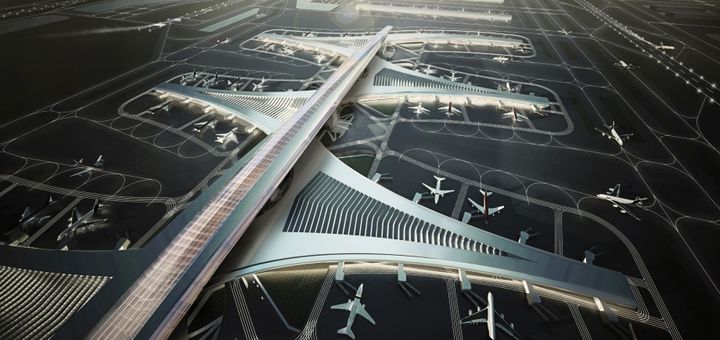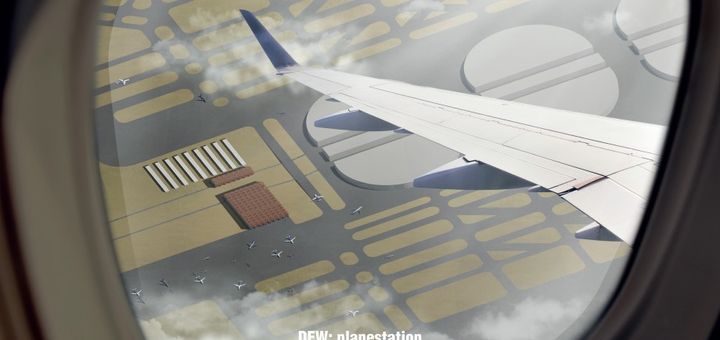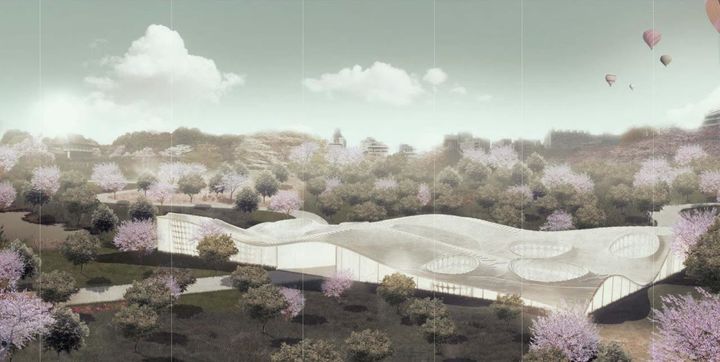Architect Curt Fentress – responsible for designs of groundbreaking airports in Denver and Raleigh – is looking for the talent of the future.
And what better way to find it than to hold a worldwide student competition for airport design?

Polina Yavna: Moscow
“We want to inspire them and get them interested in aviation and transportation,” he says. “We’re always interested in what they’re thinking about the future because they are the future.”
The 2017 Fentress Global Challenge has fielded 90 entries worldwide. Judges have narrowed the field down to a short list of 20. Winners will be announced by the end of this month.

Oliver Pozegic: Dallas/Fort Worth
“They’re scoring them independently, and then they’ll go over them and select first, second and third place,” he says. “I thought they were very imaginative and innovative overall.”
It’s a serious lineup of judges. Joining Fentress on the jury are: Aileen Cho, Senior Editor at Engineering News-Record (ENR); Chester Chipperfield, freelance Creative Director at Boom Supersonic and former Creative Director of Tesla; David Brody, Founder and Chairman of XTI Aircraft Company; Khaled Naja, Executive Vice President for the Infrastructure & Development Division of Dallas Fort Worth International Airport; Kim Day, CEO of Denver International Airport; Michael McCoy, first recipient of the Smithsonian’s Design Minds National Design Award; and Tom Allett, Editor of Airports International Magazine.

Taliya, Tokyo, Japan
A projected increase in worldwide travel, an aviation infrastructure that’s wearing down, and an expedited “Free Flight” mode of travel - directly, from point to point - are all expected to heighten demand for substantially expanded airports in the future.
And that means there’s a need for airport architects. “There are a million people in the sky during any hour right now,” he says. “Think of that doubling and tripling in the future.”

The Pacifists, Tianjin University/Shandong University, (China)
Also soon to come will be ever-faster aircraft like the now-retired Concorde. “The supersonic aircraft are back with new, lighter materials, and engine improvements regarding how much fuel they use,” he says. “And hypersonic planes too, even though they’re 40 years out.”

A reconfigured Charles DeGaulle Airport, Paris, Team Motasem Abu Zer
For young architects interested in air travel and all its implications, these are exciting times. And the Fentress Global Challenge, in its sixth year, makes them lucrative and rewarding too: First prize reaps a $15,000 cash award and a four-week paid internship at Fentress Architects. Second place receives $3,000, and third place, $2,000.
Aviation and architecture: Could there be a more futuristic, visionary collaboration?
For more, go here.
J. Michael Welton writes about architecture, art and design for national and international publications, and is architecture critic for The News & Observer in Raleigh, N.C. He edits a digital design magazine at www.architectsandartisans.com,, where portions of this column first appeared, and is the author of “Drawing from Practice: Architects and the Meaning of Freehand“ (Routledge: 2015). He can be reached at mike@architectsandartisans.com. Follow him on Twitter and Instagram at: @mikewelton